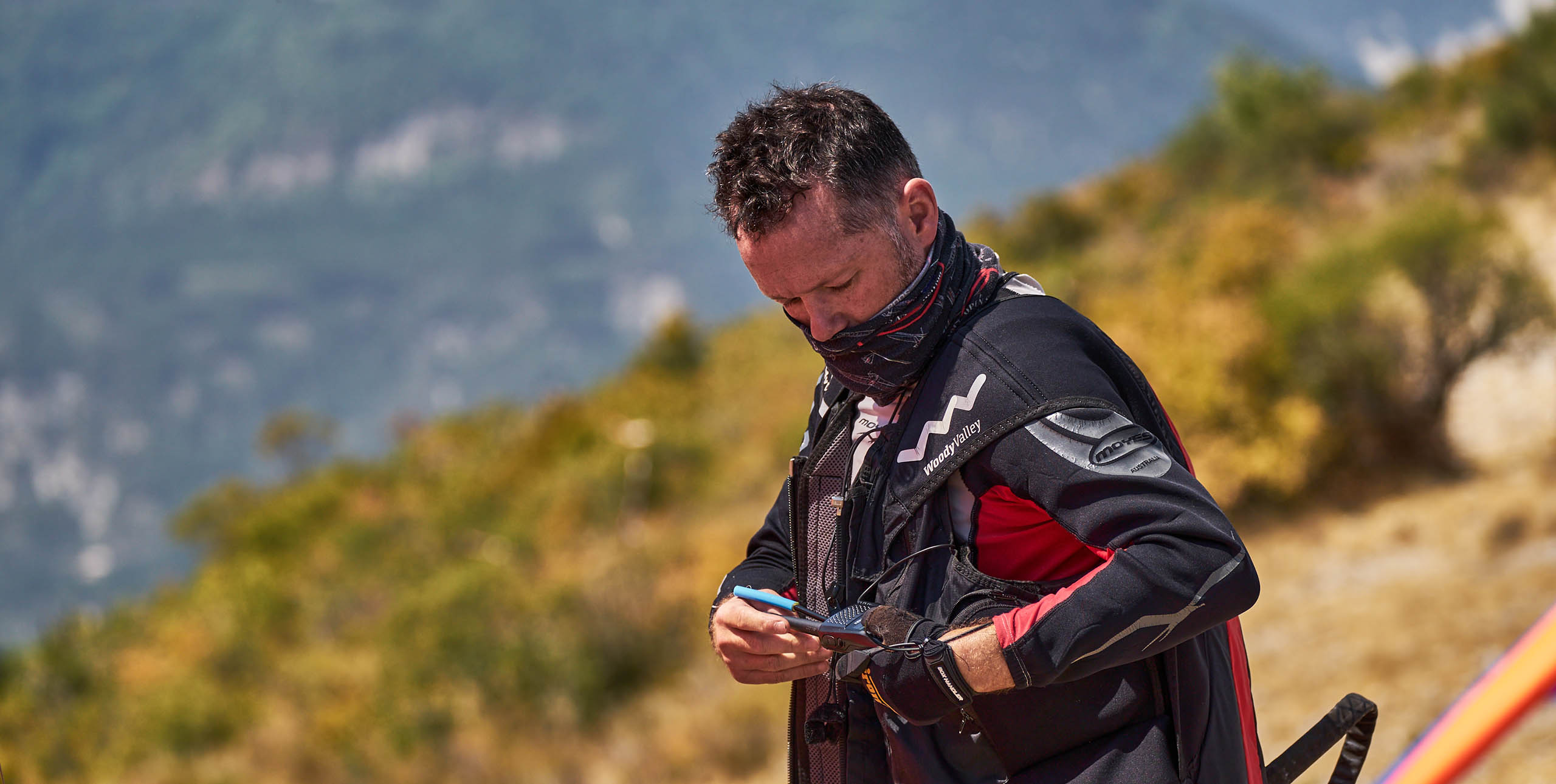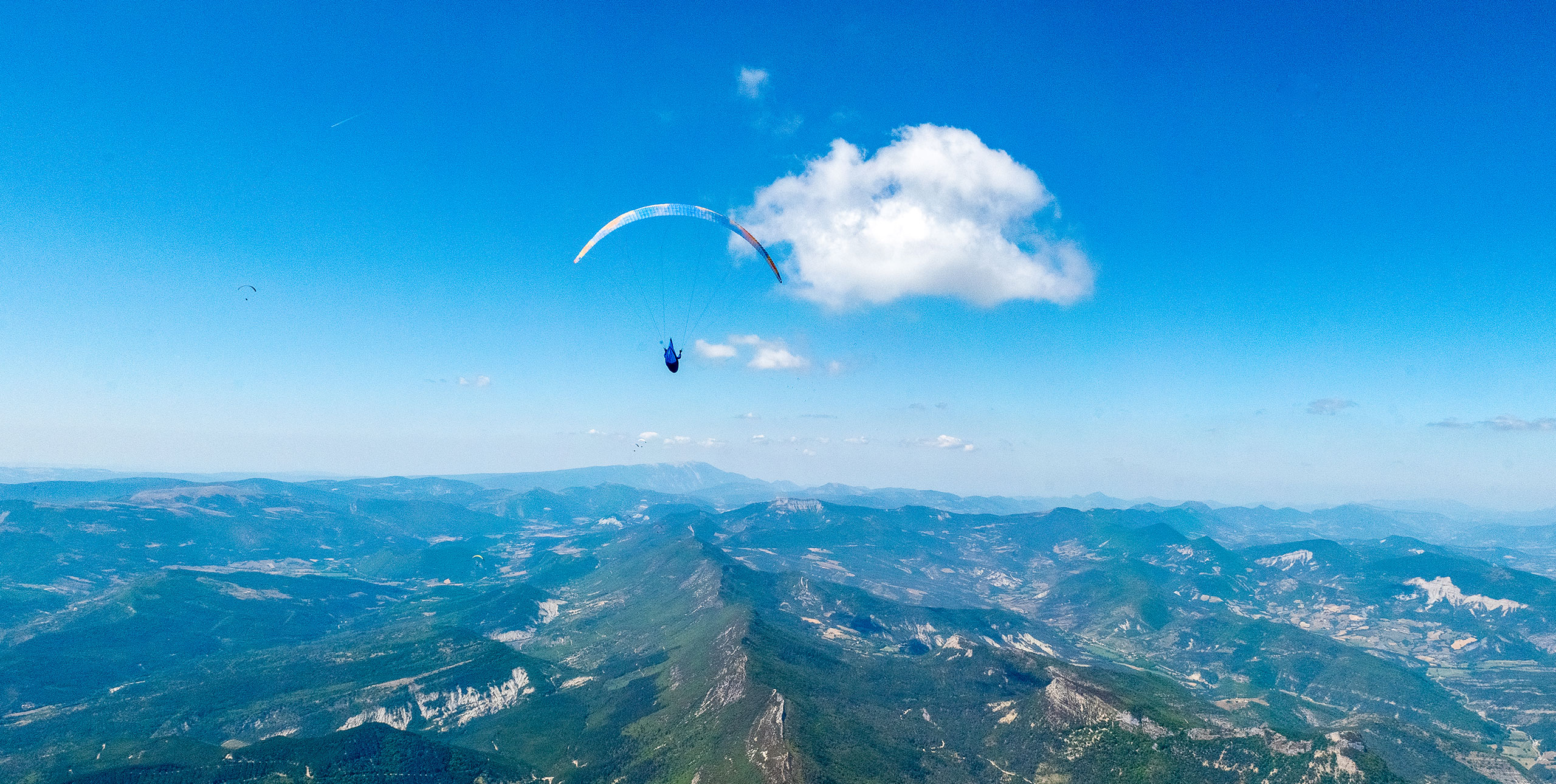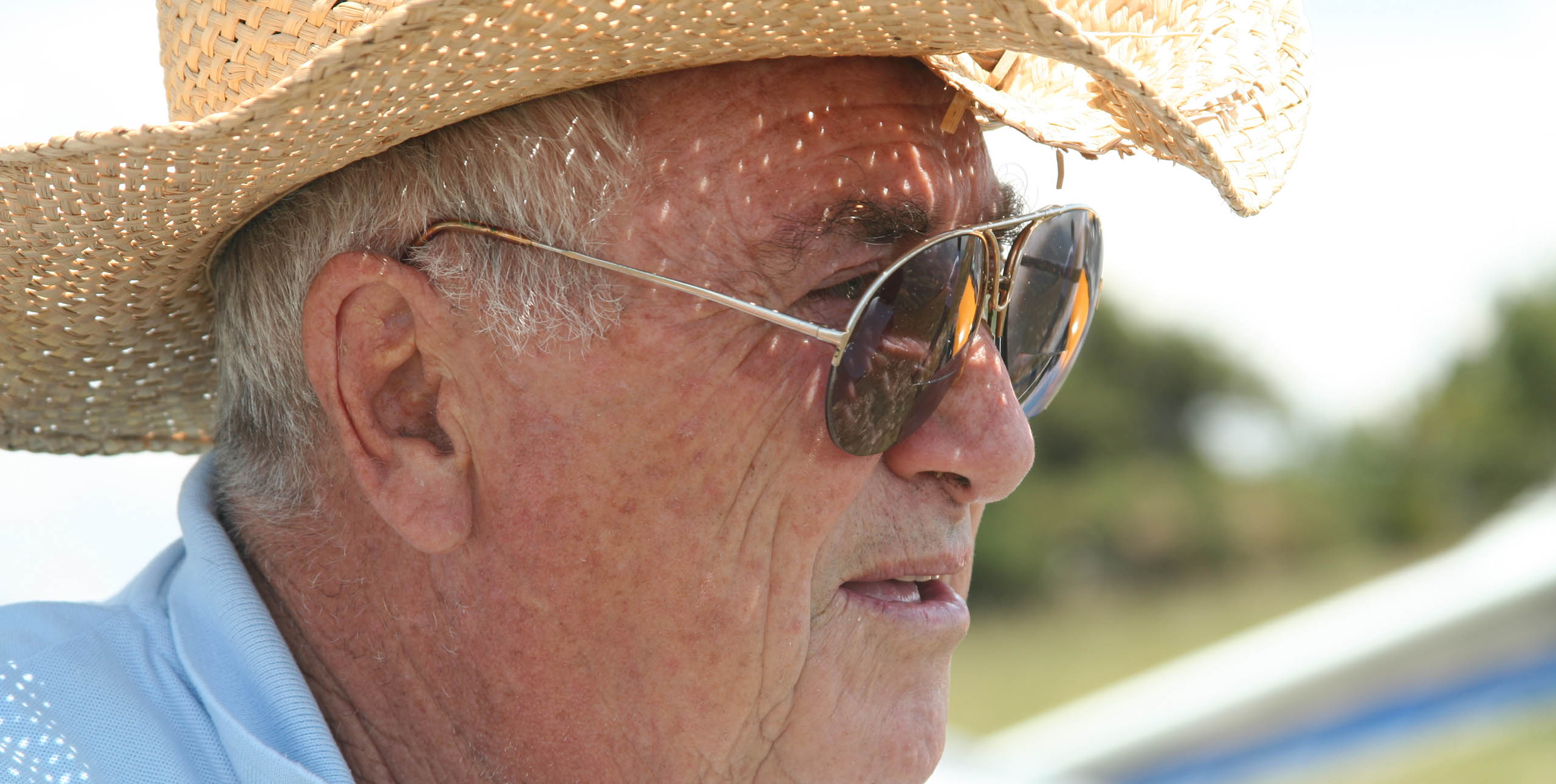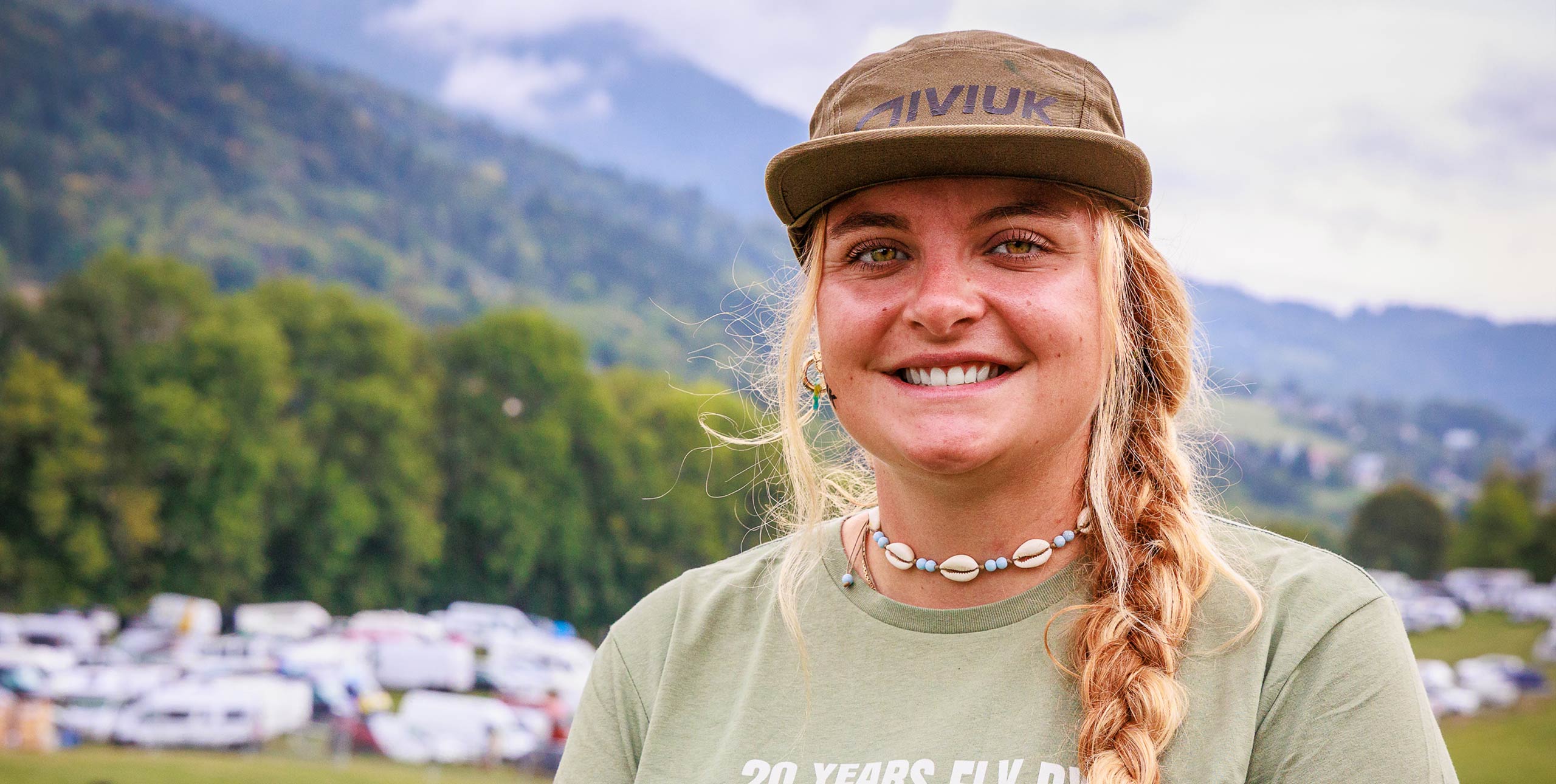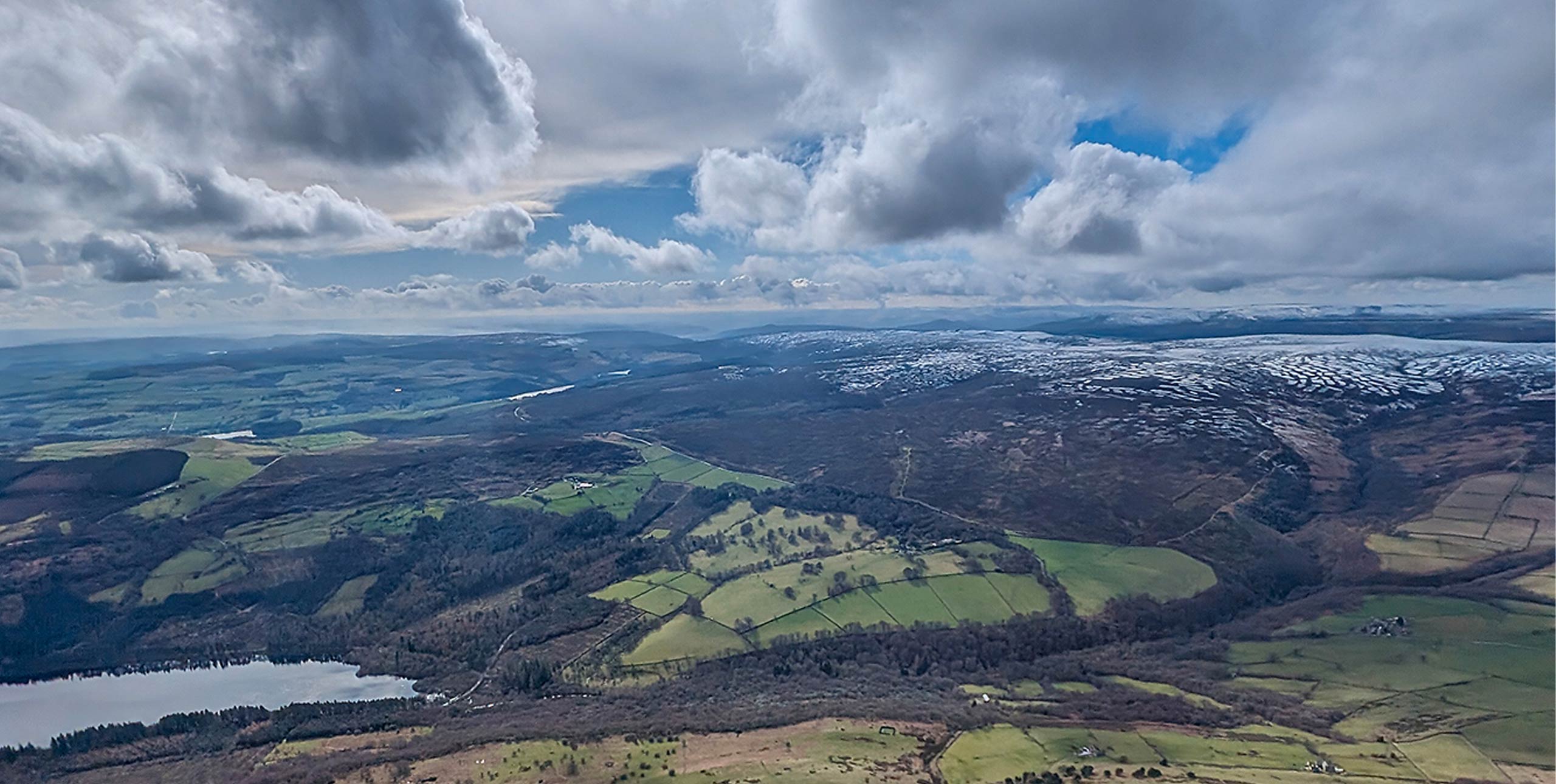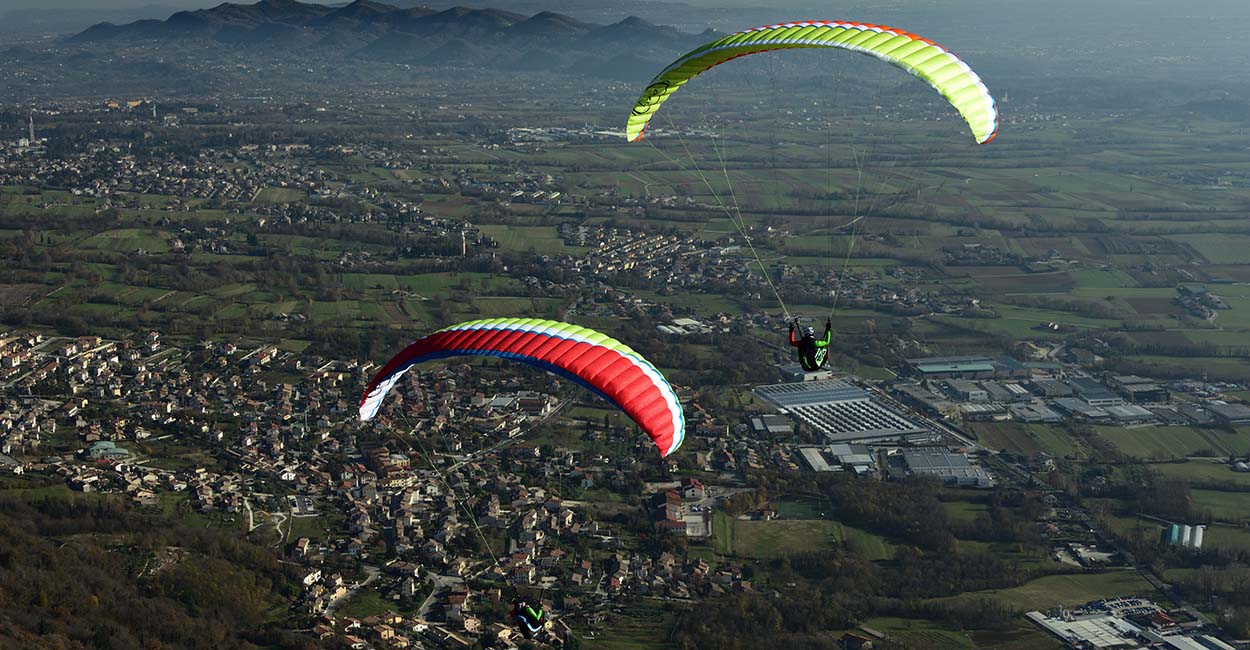
Bob Drury’s five-star system in glorious technicolour
Want to thermal better? Of course you do! Every hang glider and paraglider pilots wants to fly better. Bob Drury reveals the Five Star system of finding thermals and delves into the minds of some of the most decorated pilots in the sport to tell us how to
MY OWN initiation in to the black art of thermalling began on my tenth flight. Stood on a take-off in France, my mentor Keith gave me a thorough briefing. “When your vario starts beeping, count to four and crank on one brake.” Armed with this precious jewel I launched into the midday thermals and was blasted upward in a straight line counting slowly in my head. On four I choose my direction and cranked as hard as I could. By my fourth attempt that day I knew I was doing something wrong. Surely someone would’ve mentioned all the G force?
There was something going on here that I couldn’t quite put my finger on. Something subtler than I’d first imagined thermalling would involve. Twenty spiral dives later I was back on the ground feeling both frustrated and a little sick, but ready for Keith’s next priceless gem. “I think you might be flying a little too fast. Try more outside brake.”
Just as the Hitchhiker’s Guide to the Galaxy manages to so astutely and succinctly summarise the entire population of planet Earth as ‘mostly harmless’, Keith’s few words to me all those years ago actually did capture the essence of thermalling in its most elemental form; turn in circles to stay in the lift, and fly slowly to stay in it as long as possible. The next day I did slow spirals instead when the vario sang and managed twenty-five kilometres in two hours. It was amazing, I was hooked, but I could tell that there was more to this than Keith was letting on.
I set about gathering information through both my own experience and the wise words of others. What I discovered though, was not a hard and fast set of guidelines to follow, but a mishmash of opinions and rules that sometimes even contravene themselves.
How to thermal is such a vast subject with very few true rules that can actually be rigidly applied. So instead, in an attempt to convey the finer details of the Zen of circles and using the words and advice from some of the best pilots in the world, I’ve written down the jumble of hard-to-comprehend ‘rules’ that I’ve learned over the last 15 years of flying into two articles. Immerse yourself in Zen and the Art of Circles; I hope you learn from it.
The Five Star System
Before you look at how best to use a thermal you first have to find one. Thermals are invisible, so finding them is normally a process of stacking the odds in your favour. I teach pilots the ‘Five Star’ assessment system to help them increase the odds of finding a thermal.
It’s a simple system that awards a rating to the place you are considering going to look for a thermal, based on how many of the following clues you can see there: sunshine, wind, landscape, cloud and birds or gliders. Let’s look more closely at each clue to understand them.
The Sun
It’s our fuel. Without it there is no radiation, no heating and no thermals. If you are flying on a day with clouds and shadows, the ground will be being heated in the areas of sunshine and not in the areas of shade.
Although shadows can trigger warm air to leave the ground as they pass overhead, as a general rule the shade is a pretty poor place to be for any soaring aircraft or bird. Former world champion, Rob Whittall, once told me when I pressed him for his single most important piece of advice, “If you stay in the sunshine you’ll not go far wrong.” Award your potential thermal source one star if it’s basking in sunshine.
Wind
Not only does it create dynamic lift on hillsides, which prolongs your flight and radically increase your chances of catching a climb, it also blows the thermals along the ground and up the hillside to the top where they trigger.
In proper mountain systems that are subject to valley winds and anabatic flows you should always remember that it’s these lower winds that bring the warmed air from the valley up on to the mountains, the meteo wind is often of little real importance until you are high up.
You should study the shape of the valley below and imagine a huge river is washing up the valley. The places where your river would collide with the landscape and be forced upwards are always good places to look for thermals.
In the flatlands things work a little differently. The wind blows the warmed air along the ground until it reaches a trigger point like a river, a line of trees, a road or simply an undulation in the landscape where the thermal releases and begins to climb.
Remember warm air is buoyant and will never go down hill, if the landscape dips, the thermal releases. Loitering slightly downwind of the trigger line is a very good trick for flatland flying. If the place you want to go next has sun and wind then you are looking at a two star location. Worth a go if there’s nowhere else better within reach, but it’s still not a dead cert.
Landscape
Neither the sun nor the wind will produce any lift without a landscape to interact with. In the flatlands the landscape’s ability to absorb the sun’s warmth is crucial to thermal generation. Dark-coloured things heat up better than light-coloured things.
Wear a black T-shirt on a sunny day for ten minutes and then change in to a white one and you’ll immediately feel the difference. A dark area on the landscape, like an area of freshly ploughed fields surrounded by green pastures, will heat up much quicker than the fields around it.
But it’s not just colour that’s important, texture and aspect also play their role too. Bubbles of air move easily over or away from a smooth surface whereas a rough surface, like the stubble in a field of a recently cut crop, can have a Velcro-like effect on the warmed air.
Although it takes longer to heat up it will hold on to the heat longer than a smooth surface, which releases quickly and often, therefore it often produces a hotter bubble of air.
In Piedrahita in central Spain you can often experience this; hunting around on the dark rocky places produces nothing whilst a dive out into the light gold fields of the plains often sees you booming to cloudbase.
In the mountains the colour and texture of the landscape is far less important than its aspect to the sun. If a hillside is facing directly in to the sun it absorbs maximum radiation and produces good thermals.
The most reliable XC routes, or the big lines, stay in the strongest sunshine all day. They begin on east faces and move around to south faces for the early afternoon and then use west faces toward the end of the day. Taking yourself to a west face early on is often a recipe for an early bath, as is trying to limp home in the evenings along east faces.
Be you in the flats or deep in the mountains, if the landscape ahead is favourable for thermals then add another star. A dark rocky hillside that is facing bang into the sun and the wind is a three star choice and unless you have another stunning option within reach you’d be rash to turn away from it.
Clouds
A cumulus cloud is just the part of the thermal you can see. If there’s a cumulus cloud there, then there’s a thermal there, because cumulus clouds are only formed by rising air. This is one of the most difficult rules of XC flying to follow, because often other clues conspire against you and lure you away.
Cu’s might be forming in odd places away from where you normally expect to see them or you might come across a cu in the middle of the valley with no apparent reason to be there. It doesn’t matter if it’s defying all your local knowledge and everything you’ve ever learnt. It doesn’t matter if you haven’t the faintest idea what’s causing it and why it’s there.
Cumulus clouds are only formed by rising air. If there’s a cu there, you can climb there. I’ve often forced myself to turn away from my planned route, or I’ve dived low into what appears to be a stupid place according to all the other rules, because a cu has started building nearby and shows me where the air is definitely rising.
Equally, I have landed confused as to why the really obvious sunny ridge didn’t work only to realise I’ve ignored an unexplainable line of Cu that was actually in easy reach.
This is the one rule of XC flying that you should follow religiously. Plugging on with your flight plan into a cloudless area on a day where cu is forming elsewhere is folly, and will almost always put you on the ground or get you stuck. If your next destination has sun, wind, a good landscape and a cloud it’s a four star choice and you are just about guaranteed a climb.
Birds and gliders
If you’re confronted with a four star location there is only one thing that can possibly give more confirmation of the presence of a thermal and that’s the sight of someone or something climbing in it.
Five stars means that the thermal is definitely there and good enough for you to climb in. Only ever ignore a five star location if you can see another high-ranking location within reach further along your course.
The Five Star system is a fairly accurate method of deciding the potential of your next location. However, flying is a very fluid art. The sky is continually changing and developing and a good XC pilot is continually assessing what they see and updating their mental picture of the sky ahead.
I asked one of Britain’s best pilots, Adrian Thomas, for his guidelines on thermal detection. Living in the plains of central England, Adrian does a lot of flatland flying and gave me a fascinating insight into his thermal detection process and what’s going through his head on a good XC day.
“Firstly it’s really important to be able to picture the shape of a thermal. Thermals all leave the ground with a mushroom shaped vortex head that climbs upwards dragging a tail with it.
“The tail remains attached to the ground as long as there is warm air to feed it and then breaks away and accelerates towards the head. The fastest climb rates are in the accelerating tail, which is why you can sometimes climb quickly up to pilots who were way above you only minutes before. But you’ve got to fly very well to stay in it or the tail will accelerate past you and you’ll be left in the sink below.
“At altitude I use clouds to find thermals. On transitions I stare very hard at the clouds looking for places where wispy tendrils are forming at cloudbase and being sucked in. Tendrils alone are no good (they might just be the remnants of evaporating cloud) it’s the upward motion that matters.
“At mid-level, halfway between the clouds and the ground, I route my track between ground sources and clouds, and detect thermals by feeling the turbulence and drift patterns.
“I picture thermals as rising bubbles of air with a doughnut-shaped leading vortex at the top, and a long tail dragged along behind (see picture).
“Usually we don’t encounter the doughnut bit unless we hit the very top of the thermal (if there is a cloud that is where the doughnut vortex is). Instead we encounter the long tail.
“In the tail the air is being dragged into the rising column-thermal. That means that there is a drift towards the thermal core, and at the same time the updraft is generally increasing in strength towards the core.
“That means that generally the wing nearest the core will be in more upwards-moving air than the wing further from the core. That differential up draft will cause the wing to roll and yaw away from the core, yet at the same time it drifts towards it.
“To detect thermals at mid level it is essential to be very, very aware of your drift and of the roll and yaw effects the air’s having on the wing. Fight the roll and yaw inputs, but go with the drift. Use the controls to keep flying straight and the inflow will drag you towards the core. Remember the rule: ‘roll right, yaw right, drift left, core is to your left’.
“This all refers to perfect flows, but thermals are turbulent beasts with sink and lift combined in the flow around them. In general, at mid-level, in my experience, the turbulence feels as if it spreads out from the core like ripples on a pond.
“These ripple-like disturbances can provide information about where the thermal is – if you hit the ‘ripples’ at an angle then they affect one side of the wing first. Turning towards that side will take you towards the core of the thermal.
“Finding thermals through patterns of turbulence is difficult and something that only comes with practice and a good mental image of thermal shaping. However, once you crack it you will open a new door in your flying and your thermalling will go up a level.
“When I’m at low levels I take my track over ground features. I still pay attention to the positions of the clouds and aim to position myself simultaneously over a ground-trigger and below the good bit of a working cloud.
“The lower I am the more attention I pay to ground features like hills, sun, fields, differences in surface texture and moving things like cars or livestock that might trigger the hot air next to the ground. It’s when you’re low that you’re most likely to encounter the mushroom shaped dome of an emerging thermal rather than its twisting tail. If you do you’ll experience a different set of feelings from the air.
“Imagine a balloon rising up and hitting you from underneath. You’d feel a sudden lift as it hits you but then you’d slide sideways off the top of the balloon’s dome.
“The drift can be very strong while the roll and yaw inputs might be relatively weak. It feels like you have been grabbed by a giant hand and dragged off to one side. If you get the combination of roll, yaw and drift all going in the same direction then you are above the head of the thermal and you need to fight the roll, yaw and drift and turn in towards them to find the core.
“The core will be difficult to centre, and you will climb at a lower rate than usual – at the actual rate of ascent of the thermal as a whole, rather than that of the tail rising up into the climb.
“Still, you are in the climb at its beginning, so you can expect to go as high as the climb goes as it is unlikely to fall apart on you. When you hit the top of a thermal the rule is different from when you hit the tail; instead it’s ‘roll right, yaw right, but drift right, the core is to your left.'”
Finding thermals is one of the greatest skills you will develop as a pilot and one that is worth spending a lot of time perfecting. Former world record holder Godfrey Wenness passed on this great training technique he uses to help pilots familiarise themselves to those exact sensations that Adrian has been describing.
“When I first started flying I used to practice climbing in a house thermal for a few hundred metres then flying out and away for 5-10 seconds.
“Then I’d turn back and find it again paying attention to the way the glider behaved as I neared the thermal. Feel for the pitch, yaw and roll and notice how they change when you approach from different angles, heights and wind directions. Doing this over and over again will teach you what you feel when you are close to a thermal, how to enter it and which way best to turn to stay in.”
Airwave’s designer, 2007 paragliding world champion, three times UK champion and European vice champion, Bruce Goldsmith added further to this when he told me: “Be aware of subtle changes in your airspeed and ground speed so that you can feel your groundspeed pick up if you start to get sucked towards a thermal.”
Bruce’s fellow team mate and triple UK champion and 2009 PWC Superfinal vice-champion Russell Ogden, compounds the theory. “Let the glider follow its own path and go with the flow rather than forcing the glider to fly a straight path.”
Thermal detection is a Zen-like art that brings together all your senses with your understanding of fluid dynamics and meteorology. Understanding how the sun, air and landscape interact to create lift is only half the story, awareness of all aspects of your glider’s movement and position in the air, both vertically and horizontally, is also crucial to build the mental picture we need to visualise the air around us. Our instrumentation should merely confirm what our senses are telling us.


